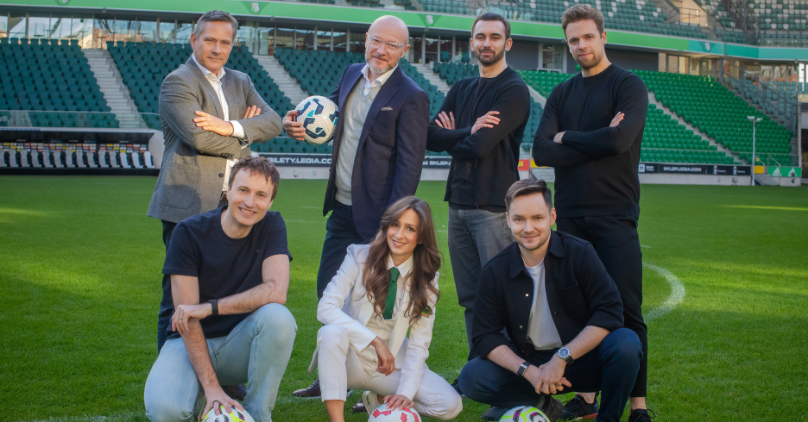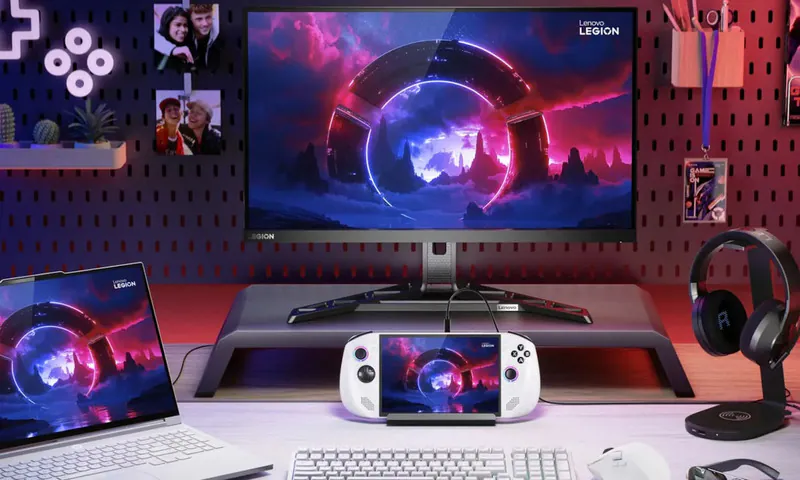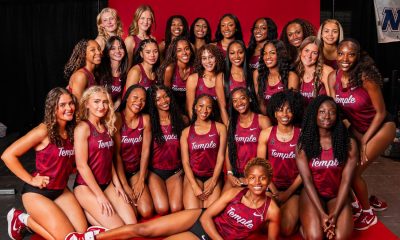Technology
ReSpo.Vision lands €4.2M to democratise football analytics and immersive match content — TFN

For years, access to high-quality football tracking data and advanced match content has been limited to top leagues with multi-million euro budgets. Most clubs, federations, and broadcasters simply couldn’t afford the infrastructure or production costs required by traditional systems, which rely on multi-camera setups and on-site installations. This has left most of the football world, especially women’s and youth teams, without the insights and experiences defining the modern game. ReSpo.Vision, a Warsaw-based deep tech sports startup, was established with a transformative mission.
“Football, unlike other major sports, was lagging in adopting truly data-driven methods, especially beyond the top leagues,” explains CEO and co-founder Paweł Osterreicher. “We’re using AI to shatter that barrier — putting fans on the pitch, empowering broadcasters with next-gen storytelling tools, and equipping clubs and federations with elite tactical insight.”
The company has just raised €4.2 million in its latest funding round, bringing total funding to €7 million, as told exclusively to TFN. The round was led by VC funds Vinci and Smartlink, with participation from Premier League defender Jan Bednarek, Snowflake co-founder Marcin Zukowski, and Wayve co-founder Amar Shah.
“This funding is a strong endorsement of our vision to bring sport into a more interactive, intelligent era,” says Osterreicher. “Whether powering enhanced broadcasts, highlight reels, or second-screen experiences, we’re helping rights-holders deliver richer, more interactive content without costly production overheads. This funding will make these innovations accessible to competitions that historically lacked access to the latest data and analysis tools.”
Democratising elite analytics and immersive match content for all teams
ReSpo.Vision was founded by a diverse and experienced team — Paweł Osterreicher (CEO), Mateusz Szala (COO), Wojciech Rosiński (CTO), and Łukasz Grad (Chief Data Scientist). Their combined strategic, technical, and startup expertise and a shared passion for sport and technology ensure that ReSpo. Vision is bringing cutting-edge tech into football and making it accessible to all, regardless of club status.
“Our mission is to level the playing field by making elite insight and immersive match content available to every team, fan, and league. This round brings together world-class investors from deep tech, football, and media—and it’s a huge validation of our vision to change how sport is analysed, broadcast, and experienced,” Osterreicher tells TFN exclusively.
The founding team’s backgrounds include leadership roles at deepsense.ai and Boston Consulting Group and award-winning work in data science and machine learning competitions.
Behind ReSpo.Vision: AI-powered 3D tracking from any single camera
At the heart of ReSpo.Vision’s technology is a breakthrough use of computer vision and deep learning to extract highly detailed 3D tracking data from single-camera video feeds, such as standard sports TV broadcasts.
The system uses computer vision and deep learning to extract highly detailed 3D tracking data from single-camera video feeds, such as standard sports TV broadcasts. It can detect over 50 body points per player in 3D space with centimetre-level accuracy without wearables or expensive camera setups. This drastically reduces the cost of data capture, making analysis possible for more clubs and federations across the sporting world and at more levels of the football pyramid, including women’s and youth team games.
ReSpo.Vision’s technology can extract this data from existing footage, such as standard TV broadcasts or tactical recordings, unlocking advanced analytics for virtually any match anywhere in the world.
ReSpo.Vision transforms this data into tactical insights and performance analytics and then goes further to create new fan experiences. Their Digital Twin Technology enables hyper-realistic recreations of real-life matches, allowing fans to relive key moments from a player’s first-person perspective. Fans can experience a mazy dribble and goal through the eyes of a striker or witness a brilliant attacking move from the view of a defender left behind.
Other media tools include automated visual overlays, such as contextual in-game graphics, match stats, branded elements, and natural language interfaces that make complex analytics accessible through simple prompts.
ReSpo.Vision was recently certified by FIFA for data quality, placing it among a select few companies globally to meet the highest industry standards for accuracy. Its clients include global football stakeholders — from major international competitions like CONMEBOL Copa America 2024 to national associations such as the Polish FA and Danish FA, as well as individual clubs including UEFA Champions League winners and Serie A’s Parma Calcio. Leading sports analytics companies also rely on ReSpo.Vision’s data to power both performance analysis and fan-facing platforms.
Industry veterans and players back ReSpo.Vision’s vision
“As a player, I know how much of a difference the right data can make—in preparation, in performance, in understanding the game at a deeper level,” said Bednarek. “What stood out to me with ReSpo.Vision is that they’re making this kind of insight available not just to top clubs, but to leagues and teams everywhere. That’s something I really believe in, because better data means better football, at every level.”
Amar Shah added: “Any sports fan would cherish the experience of reliving iconic moments of a match from the perspective of a player right at the heart of the action. ReSpo.Vision makes this dream come true by combining cutting-edge computer vision, virtual reality, and graphics technologies.”
Bartosz Drabikowski, President of the Management Board of Vinci S.A., commented, “We support companies that create innovations and, on top of that, can successfully develop and export them. We consider this project to be very promising, both in terms of technology as well as investment. We also acknowledge the potential this solution has in the future. For instance, the possibility of future implementation of this technology in other industries, such as defence or medicine.”
Miroslaw Czekaj, President of the Management Board of Bank Gospodarstwa Krajowego, added: “Our investment in ReSpo.Vision is in line with BGK’s strategic goals of supporting innovative, scalable Polish technologies and building a strong knowledge-based economy. We are pleased that through the Vinci Fund, we can support the development of a company that has the potential to become a global ambassador of Polish technological thought and, at the same time, support key areas for public security.”
What’s next for ReSpo.Vision?
With the new funding, ReSpo.Vision will expand its offer to broadcasters, rights holders, and digital platforms, focusing on scaling global presence across more leagues and federations. It will launch new product lines — real-time visual overlays and immersive Digital Twins — and continue to develop its AI stack to support live data, fan engagement, and automated storytelling.
The company’s unique approach is already helping to open up elite-level analysis for those who previously lacked access, from underserved women’s and youth games to lower division clubs. Women’s football is a prime example — it’s growing faster than the men’s game, and technology has a vital role in continuing to close the gap.
ReSpo.Vision also aims to address a growing challenge in sports media: capturing the attention of younger audiences. Reports show that only 31% of global sports fans aged 18–24 watch full live matches, far lower than older demographics, with many younger viewers preferring short-form, interactive content.
ReSpo.Vision is helping democratise both elite-level analytics and next-gen storytelling, making them accessible across the entire football ecosystem.
Technology
Shanghai Rolls out New Policy to Boost Esports

Shanghai has unveiled a citywide plan to boost its gaming and esports industry, including a 50 million yuan ($7.1 million) annual support fund, as it seeks to help homegrown game developers expand overseas.
The plan was announced at the 2025 China Game Industry Annual Conference, held from Dec. 17 to 19, where city officials outlined 10 measures aimed at building a gaming and esports ecosystem with international reach.
The measures place particular emphasis on original games in driving industry growth, encouraging the development of games that promote traditional Chinese culture and Shanghai’s urban identity. It also invites gaming collaborations with education and healthcare entities, among others.
To support overseas expansion, city authorities said they would establish a service platform to help local game developers navigate copyright, payment settlements, and overseas advertisements.
The city also pledged to boost its esports sector by attracting major international esports competitions and offering incentives to successful Shanghai-based esports clubs. The city is home to 34 esports clubs — more than any other Chinese city.
The policy shift underscores a major regional push to tap China’s booming gaming sector, which grew nearly 10% from last year to a record revenue of 350.8 billion yuan in 2025. The total number of gamers also climbed to a record 683 million.
Chinese game studios are increasingly pushing overseas, buoyed by hits such as “Black Myth: Wukong” and “Where Winds Meet,” though piracy, unauthorized private servers and trademark disputes continue to complicate international expansion.
Beyond game development, gaming has also become a broader economic driver, with sales of game-related merchandise, known as guzi, reaching nearly 170 billion yuan last year.
Shanghai’s initiative aligns with a broader national push to position gaming as a pillar of economic and cultural growth. In April, the central government rolled out a plan to promote gaming as a new driver of technological innovation and cultural exports.
Several provinces have followed with their own policies. In May, the southern Guangdong province announced measures to support esports clubs and hotels, industrial parks, and streaming hubs. In June, the eastern Zhejiang province launched a similar initiative focused on helping Chinese games expand overseas.
Editor: Marianne Gunnarsson.
(Header image: A Chinese team competes during the 2025 Shanghai Esports Masters, Dec. 4, 2025. VCG)
Technology
Xpoint secures new growth funding to supercharge geolocation innovation for real money gaming

Our website uses cookies, as almost all websites do, to help provide you with the best experience we can.
Cookies are small text files that are placed on your computer or mobile phone when you browse websites.
Our cookies help us:
– Make our website work as you’d expect
– Remember your settings during and between visits
– Offer you free services/content (thanks to advertising)
– Improve the speed/security of the site
– Allow you to share pages with social networks like Facebook
– Continuously improve our website for you
– Make our marketing more efficient (ultimately helping us to offer the service we do at the price we do)
We do not use cookies to:
– Collect any personally identifiable information (without your express permission)
– Collect any sensitive information (without your express permission)
– Pass personally identifiable data to third parties
– Pay sales commissions
Technology
HDMI Gaming Technology Lines : HDMI Licensing Administrator
At CES 2026, visitors to the HDMI Licensing Administrator’s booth can witness prototypes of the Ultra96 HDMI Cable, which was “introduced in the recently released HDMI 2.2 Specification,” alongside the Ultra High Speed HDMI Cable and the Premium High Speed HDMI Cable. The organization will highlight the high-refresh performance rate of its products, as well as their compatibility with popular portable gaming consoles and retro-style gaming systems. Supportive features like variable refresh rate and auto low latency mode will be highlighted, as well.
Technology
Expandable eSports Laptop Models : Lenovo Legion Pro Rollable

The Lenovo Legion Pro Rollable laptop will reportedly be based on the brand’s Legion Pro 7i platform with an Intel Core Ultra processor and NVIDIA GeForce RTX 5090 GPU. The additional tech specs for the laptop are yet to be announced.
Image Credit: Lenovo
Technology
Driving Digital Innovation: Sultan Almasoud on the Top Trends in Technology and Esports in Saudi Arabia | Morgan Lewis – Tech & Sourcing

Dr. Sultan Almasoud, managing partner of Morgan Lewis’s Riyadh office, has been closely involved in the Kingdom of Saudi Arabia’s rapid evolution into a global hub for innovation. His insights on the questions below shed light on the trends reshaping technology and esports—and the opportunities they unlock for investors and operators entering the market.
Q&A: SULTAN ALMASOUD
1. What are the most significant technology trends currently driving growth in Saudi Arabia?
Saudi Arabia is undergoing one of the most ambitious digital transformation journeys in the world. The most significant trend is the rapid adoption of AI across government, financial services, healthcare, and industrial sectors. Vision 2030 has accelerated investment in AI-ready infrastructure, digital identity, automation, and data platforms that support new digital services at scale.
We also are seeing strong momentum in cloud migration, driven by hyperscaler expansions, data localization policies, and new solutions that make it easier for public and private entities to adopt cloud-native technologies. In parallel, fintech innovation, digital payments, and open banking are creating a dynamic ecosystem of startups, investors, and regulators working together to modernize the financial landscape.
In addition, Saudi Arabia’s giga projects are acting as large-scale accelerators for advanced technologies, while strong regulatory frameworks around data, cloud, and cybersecurity are providing international investors with clarity and confidence. Combined with significant investment in digital talent and localization, this is enabling sustainable, long-term technology-driven growth across the Kingdom.
2. How is Saudi Arabia positioning itself as a global hub for esports?
Saudi Arabia has made esports a national priority, fundamentally reshaping the sector. The launch of the Saudi Esports Federation (SEF) and the Esports World Cup, supported by major public investment commitments, has placed the Kingdom at the center of global competitive gaming.
But the strategy extends beyond events. The country is developing training academies, production studios, esports arenas, and digital platforms that sustain year-round player and audience engagement. This ecosystem-driven approach is drawing global publishers, teams, and content creators who now view Saudi Arabia as a foundational market for long-term esports growth.
3. What opportunities do you see emerging for investors and companies entering the Saudi tech and esports market?
There is tremendous opportunity at the intersection of technology, entertainment, and digital infrastructure. For technology companies, opportunities are especially strong in AI solutions, cybersecurity, cloud services, digital identity, and smart city platforms.
In esports, the most compelling opportunities lie in content creation, talent development, gaming studios, tournament production, and technologies supporting broadcasting, analytics, and community engagement. Investors who understand the regulatory environment and align with the Kingdom’s long-term vision will find a market eager for strategic partnerships.
4. What challenges should companies keep in mind when operating in these fast-evolving sectors?
These sectors are evolving quickly, which makes regulatory navigation an important challenge. Companies need to stay aligned with requirements around licensing, content regulation, data protection, and foreign investment—areas that are developing alongside the industry itself.
Another key challenge is specialized talent. Whether it’s game design, AI engineering, or esports event management, building local capability is essential. Companies that invest early in training programs, knowledge transfer, and local partnerships will be best positioned for sustainable growth.
Ultimately, success requires a long-term commitment to the market, strong local relationships, and an understanding of national priorities as the Kingdom advances its digital transformation goals.
KEY TAKEAWAYS
Saudi Arabia is positioning itself at the forefront of global innovation, with technology and esports playing central roles in the nation’s economic transformation. As investment accelerates and new digital ecosystems emerge, companies that build strategic partnerships and engage deeply with local priorities will be poised to lead.
Technology
Fast Switches, RGB Customization, and Next-Gen Gaming Precision

Mechanical keyboard 2026models integrate ultra-fast switches that achieve 0.1ms actuation with under 1mm travel, allowing competitive gamers to press keys 20% faster in FPS and MOBA titles. RGB keyboards now feature 16.8 million per-key zones, enabling dynamic lighting that reacts to game events, killstreaks, or ability cooldowns. Hall-effect magnetic switches dominate the premium segment, offering adjustable actuation points from 0.1mm to 4.0mm while lasting 100 million keypresses with no physical wear. Together, these innovations deliver both tactile precision and immersive customization, making mechanical keyboards a vital tool for high-level competitive play.
Mechanical keyboard 2026 designs also focus on durability, ergonomics, and modularity. Hot-swappable switches allow players to fine-tune the feel without soldering. Aluminum chassis and gasket-mounted plates reduce finger fatigue while maintaining solid stability for marathon gaming sessions. Modern firmware supports thousands of macros, rapid polling rates, and dual-PC setups, ensuring that esports players experience consistent input across multiple platforms.
Fast Switches and Key Feel
Fast switches like Gateron KS-20 reduce actuation force to 35g at just 0.2mm depth, while optical variants eliminate debounce delays, registering inputs at 8,000Hz natively. Mechanical keyboard 2026 boards include hot-swappable sockets, allowing players to swap magnetic, linear, or tactile stems without soldering. PBT double-shot keycaps resist shine after five years of heavy use, and gasket-mounted designs reduce bottom-out impact, lowering finger fatigue by up to 30% during marathon sessions. Combined, these features enhance responsiveness, durability, and ergonomic comfort for both competitive and casual gamers.
Other innovations include per-key actuation calibration via onboard OLED displays, letting players fine-tune each switch’s sensitivity individually. Fast switches allow remapping for advanced trigger modes, such as assigning jump or crouch to rapid keypresses, boosting movement efficiency in FPS titles. Firmware support like VIA and QMK provides up to 1,000 macro layers, ensuring fluid execution of complex combos. NKRO (N-Key Rollover) maintains accurate detection of 100 simultaneous inputs, preventing ghosting during intense gameplay.
RGB Keyboards and Lighting Customization
RGB Gaming keyboards in 2026 employ addressable LEDs beneath every key, responding instantly to in-game actions, music beats, or voice chat activity. Fast switches synchronize with lighting effects to create visual feedback for ability activation or kill confirmations. VIA and QMK support advanced lighting macros across 16.8 million colors, letting players design immersive themes and reactive effects. RGB keyboards also integrate USB passthrough hubs, enabling controller charging or peripheral connections without latency interruptions.
Premium gaming screens emphasize both aesthetic and functional benefits. Aluminum chassis with acoustic foam layers tune sound profiles from soft, creamy thocks to sharp, clicky clacks, complementing per-key lighting for sensory immersion. RGB keyboards combined with modular keycaps allow instant visual recognition of critical keys, enhancing reaction times in high-pressure matches. Firmware updates maintain compatibility with new software and games, ensuring that RGB functionality evolves alongside gaming trends.
Build Quality and Advanced Features
Mechanical keyboard 2026 models focus on robust materials and ergonomic design to support competitive play. Aluminum top plates weigh around 1.2kg, stabilizing 60% or full-size layouts, while foam and gasket mounting reduce vibration and noise. Fast switches with Hall-effect sensors allow precise calibration and onboard memory, storing personalized actuation and lighting settings.
Other features include multi-device support, 8,000Hz polling across dual-PC setups, and modular layouts for hybrid gaming and productivity. High-end models provide long-term durability, with switches rated for 100 million keypresses and chassis built to withstand sustained pressure. These designs ensure that both casual players and esports professionals can maintain peak performance over years of intense use.
Key Features:
- Aluminum top plates provide stability and long-lasting structural integrity.
- Foam and gasket-mounted designs reduce vibration, noise, and finger fatigue.
- Hall-effect fast switches allow precise per-key calibration and storage.
- Modular layouts and multi-device support enhance versatility for gaming and work.
- 8,000Hz polling ensures sub-ms latency across dual-PC or multi-system setups.
- Switches rated for 100 million keypresses guarantee long-term durability.
Conclusion
Mechanical keyboard 2026 models with fast switches and RGB keyboards redefine both competitive precision and immersive gameplay experiences. Adjustable actuation, ultra-fast response times, and reactive per-key lighting provide measurable advantages in esports, allowing players to execute rapid combos and maintain visual awareness under intense pressure. Durable materials, modular layouts, and advanced firmware ensure 10+ years of relevance, keeping performance consistent even as switch technology evolves. Combined, these innovations set a new benchmark for gaming keyboards, making them an indispensable tool for casual enthusiasts and professional gamers alike.
Frequently Asked Questions
1. What makes mechanical keyboard 2026 switches faster than older models?
Mechanical keyboard 2026 switches achieve 0.1ms actuation with minimal travel, reducing input delay. Optical switches eliminate debounce entirely. Hot-swappable designs allow users to optimize each switch type. Together, they improve reaction times in competitive gaming.
2. How do RGB keyboards enhance gaming performance?
RGB keyboards provide per-key lighting for instant visual cues on ability cooldowns, killstreaks, or critical keys. Reactive effects improve reaction speed in high-pressure scenarios. Custom macros allow lighting to indicate complex input sequences. This combination merges aesthetics with functional gameplay advantages.
3. Are fast switches durable enough for long-term use?
Yes, Hall-effect and magnetic switches are rated for 100 million keypresses. Gasket-mounted designs reduce mechanical wear and finger fatigue. PBT double-shot keycaps resist shine and degradation. Long-term durability ensures consistent performance for years.
4. Can mechanical keyboard 2026 models support multi-device setups?
Many models integrate USB passthrough hubs for peripherals and dual-PC support. 8,000Hz polling ensures sub-ms latency across connected devices. Firmware allows separate profiles per device. This setup guarantees smooth operation for both gaming and productivity tasks.
-

 Motorsports2 weeks ago
Motorsports2 weeks agoSoundGear Named Entitlement Sponsor of Spears CARS Tour Southwest Opener
-

 Rec Sports3 weeks ago
Rec Sports3 weeks agoBlack Bear Revises Recording Policies After Rulebook Language Surfaces via Lever
-

 Motorsports2 weeks ago
Motorsports2 weeks agoDonny Schatz finds new home for 2026, inks full-time deal with CJB Motorsports – InForum
-

 Rec Sports3 weeks ago
Rec Sports3 weeks agoHow Donald Trump became FIFA’s ‘soccer president’ long before World Cup draw
-

 Rec Sports2 weeks ago
Rec Sports2 weeks agoDavid Blitzer, Harris Blitzer Sports & Entertainment
-

 Motorsports2 weeks ago
Motorsports2 weeks agoJR Motorsports Confirms Death Of NASCAR Veteran Michael Annett At Age 39
-
Sports2 weeks ago
Elliot and Thuotte Highlight Men’s Indoor Track and Field Season Opener
-
Sports2 weeks ago
West Fargo volleyball coach Kelsey Titus resigns after four seasons – InForum
-

 Motorsports2 weeks ago
Motorsports2 weeks agoRick Ware Racing switching to Chevrolet for 2026
-

 Sports2 weeks ago
Sports2 weeks agoTemple Begins Indoor Track & Field Season at UPenn This Weekend

































